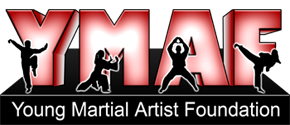The Young Martial Artist Foundation is a public benefit non-profit corporation.


The Young Martial Artist Foundation is a public benefit non-profit corporation.

Creating better, balanced, and safer communities through the Arts, one individual at a time.
This list is organized primarily by region of origin. Styles which have local schools are marked with a ![]() icon. Click the icon to jump to the school location page.
icon. Click the icon to jump to the school location page.
| Japanese Styles | |||||||
|---|---|---|---|---|---|---|---|
| Karate - Styles adapted in Okinawa from Chinese martial arts. | |||||||
| Known for deep stances and linear, lunging movements as well as some soft techniques and circular movements. | |||||||
| Known for close-ranged fighting that includes grasping motions, using a combination of hard and soft techniques. | |||||||
| Known for combining some jujitsu locks and throws with the stances and strikes of karate. | |||||||
| Known for its wide syllabus of kata, or empty-handed, dancelike forms. | |||||||
| Known for its full contact sparring, which allows full-powered punches to the body and full-powered kicks to the legs, body and head. | |||||||
| Historic - Styles derived from traditional Samurai training techniques. | |||||||
| Utilizes all forms of grappling techniques, i.e. throwing, trapping, pins, joint locks, holds, gouging, biting, striking and kicking. | |||||||
| Focuses on immobilizing one's opponent with grappling maneuvers, forced submissions by joint lock or choke, strikes and thrusts by hands and feed as well as weapon defense. | |||||||
| A grappling art where a practitioner will blend with the motion of their attacker and redirect the force rather than oppose it head-on, completed with various throws or joint locks. | |||||||
| A martial art that teaches strategy and tactics of unconventional and guerrilla warfare as well as the art of espionage purportedly practiced by the ninja. | |||||||
| Weapons - Styles based on training with classical weapons of Japan. | |||||||
| Sword fighting based on traditional Japanese swordsmanship, or kenjutsu that uses a special bamboo sword and sword fighting gear for protection. | |||||||
| Associated with the smooth, controlled movements of drawing the sword, striking or cutting an opponent, and then replacing the sword in its scabbard. | |||||||
| Generally refers to the classical weapon traditions of Okinawan martial arts, including weapons such as bo staff, sai, tonfa, kama, and nunchaku. | |||||||
| Korean Styles | |||||||
|---|---|---|---|---|---|---|---|
| Includes a system of blocks, kicks, and strikes which emphasizes kicks thrown from a mobile stance, employing the leg's greater range and power. | |||||||
| Primarily a striking art, focusing heavily on striking with the hands and feet and including some basic joint locks and throws. | |||||||
| Emphasizes circular motion, non-resisting movements, and control of the opponent, employing joint locks as well as common primitive attacks. | |||||||
| Based on traditional Korean fighting skills and philosophy, including hard and soft style striking and blocking, grappling, and weapons. | |||||||
| Attempts to be a comprehensive study of all Korean martial arts and may include modern techniques such as gun defense and weapon improvisation. | |||||||
| Southeast Asian Styles | |||||||
|---|---|---|---|---|---|---|---|
| A hard martial art from Thailand which makes use of punches, kicks, elbows, and knee strikes and is derived from Chinese and Indian martial arts. | |||||||
| A class of Filipino martial arts that emphasize weapon-based fighting with a stick, staff, or knife and focus on simplicity in their techniques. | |||||||
| A collection of martial arts originating in Indonesia which tends to focus on strikes, joint manipulation, bladed weapons, throws, and animal-based techniques. | |||||||
| Styles From Other Regions | |||||||
|---|---|---|---|---|---|---|---|
| USA: A hybrid martial arts system with direct, non-classical and straightforward movements, primarily focusing on empty hand techniques. | |||||||
| USA: A general name for martial arts developed in Hawaii characterized by the use of quick moves in rapid-fire succession intended to overwhelm an opponent. | |||||||
| Israel: An eclectic hand-to-hand combat system that uses wrestling, grappling, and striking techniques and is known for extremely efficient and brutal counter-attacks. | |||||||
| Brazil: Combines elements of martial arts, music, and dance and is known for its fluid acrobatic play, feints, takedowns, leg sweeps, kicks, and head-butts. | |||||||
| Japan/USA: Refers to the standing sport of kicking and punching, often practiced for self-defense, general fitness, or as a full-contact sport. | |||||||
| France: Uses both the hands and feet as weapons, combining elements of western boxing with graceful kicking techniques which use only the foot to contact the target. | |||||||
| Europe/UK: A combat sport and martial art in which two people fight using only their fists until one is knocked down or is unable to continue due to injury. | |||||||
| Russia: A hand-to-hand combat system which has roots in judo and karate as well as traditional folk styles of wrestling from central Europe and Eurasia. | |||||||
| Worldwide: An ancient martial art that uses grappling, throws, takedowns, joint locks, pins and other holds and is found in almost every culture throughout history. | |||||||
| Europe: historically refers to the martial arts of European swordmanship, and today has become an olympic sport using three types of unsharpened and flexible blades. | |||||||

![]() Martial Arts Styles
Martial Arts Styles